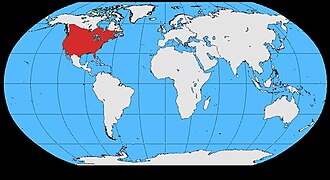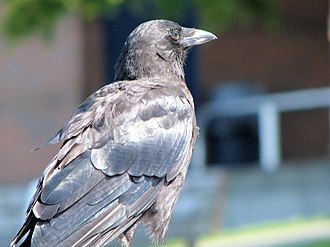Field Guide/Birds/Corvus brachyrhynchos
| American Crow | ||||||||||||||
|---|---|---|---|---|---|---|---|---|---|---|---|---|---|---|
| 200px | ||||||||||||||
| Template:Taxonomy | ||||||||||||||
| ||||||||||||||
| Binomial name | ||||||||||||||
| Corvus brachyrhynchos C. L. Brehm, 1822 |
The American Crow (Corvus brachyrhynchos) is slightly smaller than the European Carrion Crow in overall size (39-49 cm in length) and also has a proportionately smaller bill. Feathers are black, with a purple or blue iridescence in some lights. Legs, feet and bill are also black. Several regional forms are recognized and differ in bill proportion and overall size from each other across North America, generally smallest in the southeast and the far west.
Range: Occurring from British Columbia to Newfoundland in the north, and the Gulf of Mexico to Florida in the southern parts of its range and includes virtually all types of country from wilderness, farmland, parks, open woodland to towns and major cities.
Food: A typical crow taking invertebrates of all types, carrion, scraps of human food, seeds, eggs and nestlings, stranded fish on the shore and various grains. It also, like most crows, scavenges at rubbish dumps.
Nest: Nearly always in trees but sometimes also in large bushes and, very rarely, on the ground. Eggs, 3-6 and incubate incubated for 18 days. The young are fledged usually by about 35 days. Normally single nesting, the species has been recorded as nesting in small colonies in the western parts of its range.
Voice: The most usual call is a short and rapid "caah-caah-caah".
The Northwestern Crow Corvus caurinus is very closely related to the American Crow and indeed structurally, they almost blend into each other in northern Oregon though the voice remains one of the principle differences between these two close species.


